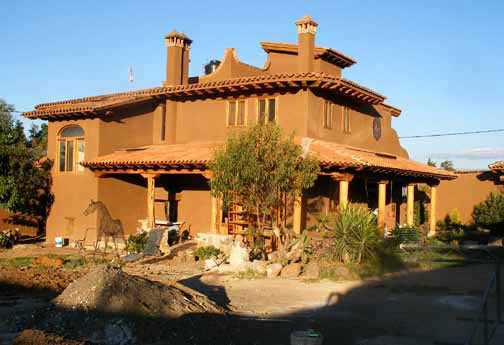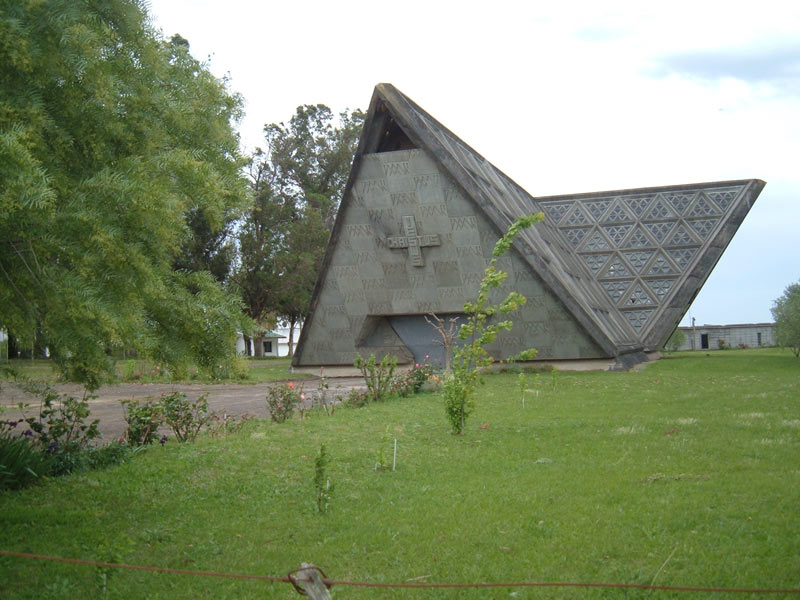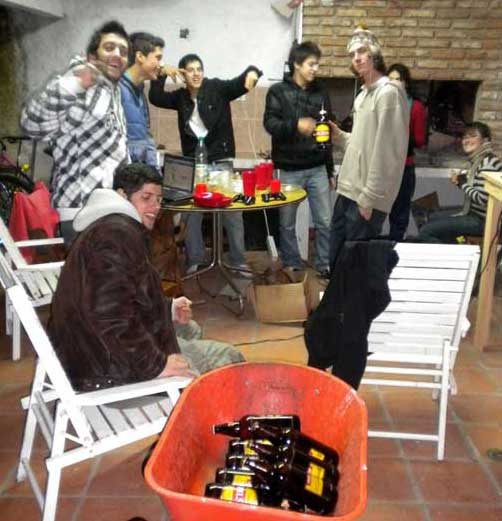
“Wherever you go, there you are…” is a quote attributed to the teachings of Buddha. No matter how far away we go in hopes of finding greener grass, there’s no getting away from ourselves.
My husband and I moved to the mountains of central Mexico in 2006 and immediately got to work designing our dream home on an extra large lot in the small village of Tzurumútaro, Pátzcuaro. We lived in the small casita while our big house was being built. Our Mexican contractor decided our dream home should be even grander and built us a beautiful Mexican colonial mansion with illegally cut pine beams (which we learned about much later, that’s another story …), baldosa floor tiles, beautiful stone arches (noticeably lacking the keystone), three fireplaces finished with elaborate wood mantels, a circular staircase, new windows to accent exquisite views, and French doors opening to the closed courtyard on one side and the large garden with pond on the back side. It was beautiful and spacious. Perfect for indoor and outdoor living.
But after the sledge hammers stopped pounding from gutting old walls and the concrete mixer’s revolving drum stopped its noisy spin, we began to realized the noise wasn’t going to stop.
Trains rumbled through our village up to ten times a day and blew their horns repeatedly to caution pedestrians to move off the tracks. Since our property line was less than 70 meters from the track, the noise was unavoidable. In addition to the rumble of engines and screeching or axles, the incredibly loud train horn: LOOONG LOOONG SHORT LOOONG preceding the town’s two level crossings. One of which was, you guessed it, one block from us, or 15-20 seconds before the train arrived, which is exactly when a train is required to blow the signal. Opposite us, a couple houses down, periodically we’d hear frantic, very loud squealing of a pig. We never found out for sure what that was all about. I wore ear plugs to muffle that. And, every time someone died, the local religious rites included fireworks set off every twenty minutes to commemorate the life of the deceased. The fireworks, rockets that went up 100 meters then exploded with deafening concussions, continued until the body was taken away. In the meantime all dogs for miles around howled and barked for hours on end, making it difficult for me to sleep at night and to concentrate and write by day. A writer friend of ours, doing research for a book on the culture of Mexico, came to the conclusion that Mexicans were actually sleep deprived because of noise.
Mexicans do know how to celebrate and do it often. There are official holidays observed nationwide and numerous local festivities to honor religious events or public celebrations. In 2008, I counted forty-four holidays that were celebrated with rockets (cohetes), firecrackers, sparklers, rattles, drums, loud music, a parade, and lots of noise. Numerous times, in the middle of the night, I was jolted awake by aerial explosions. And after experiencing the war in Cyprus in 1974 where the bombs bursting in air were real bombs, I cringed at the cacophony of any nerve racking noise.
In 2009 my husband and I traveled from our small village in Mexico to a small country in South America which was getting good reviews, and seemed like it might be a quieter place — más tranquilo. Although we loved many things about Mexico (the customs, the traditions, the art, and the delicious food), the constant noise was wearing us down.
While vacationing in a small Uruguayan beach town, we often sighed and smiled at each other realizing we had found a quiet place. By day, we walked the beach and explored other small towns and villages nearby. All seemed tranquilo compared to our village life in Mexico. Each night we slumbered deeply, lulled to sleep by the soothing sound of waves lapping and swirling along the sandy seashore. By the end of our first stress-free week, we decided to move to Uruguay. My head tingled with excitement, knowing I would finally be able to finish an important project I had been working on for many years—my memoir.
We moved to Uruguay end of 2009. I felt a flood of creative energy wash over me as I walked barefoot along the sandy beach near our new home in Atlantida. I could hear myself think. Aah! Gentle waves tickled my toes and senses, and writing became a joy again. I finished my book, “The Lullaby Illusion,” in 2013. Happy to say in that same year, I only counted seven noisy holidays in Uruguay. Tranquilo is nice!










![By Fedaro (Own work) [CC-BY-SA-3.0 (http://creativecommons.org/licenses/by-sa/3.0)], via Wikimedia Commons](https://susanjoycejourneys.com/wp-content/uploads/parrillero.jpg)

